Many people don’t know what are the common monsters in Resident Evil 3: Remake? Today’s article brings you an introduction to the common monsters in Resident Evil 3: Remake. If you still don’t know, let’s find out with the editor.
1.Zombie
Zombies are those who have been infected with the T-virus (through contaminated water sources or infected bites and scratches from virus carriers).
Researchers at Umbrella Company refer to zombies in Haitian folklore as "zombie", which are said to be corpses recently resurrected by necromancers for use as slave labor.
Since some of the characteristics of zombies are rotten skin and lack of pulse, they are often mistaken for reanimated corpses.
Initial biological weapons testing
A zombie researcher was witnessed in the mansion incident.
During his experiments with the T-Virus, Dr. James Marcus begins to consider the impact of human testing on his research, ultimately forcing people to become test subjects for his secret biological research project. The result of these experiments were the first zombies. It appears that information about Marcus's behavior only surfaced during an investigation into his laboratory in 1998, which was quickly abandoned when he was murdered a decade earlier. Investigation revealed that no fewer than 20 people served as experimenters
Necrosis of body tissue, especially brain necrosis, is so severe that zombies may be mistaken for death. Damage is extreme to the cerebral cortex, which is responsible for higher-order functions of the brain. As a result, sensory, cognitive, motor skills, spatial reasoning, and language are either very limited or completely absent. Zombies, lacking human reasoning and relying entirely on basic desires, will wander in search of food. Brain function is not completely lost, however, and zombies are thought to have a habit of wandering around buildings they frequented before infection. They can also recognize a door handle and realize its function. The hypothalamus is also affected, so no matter how much the zombies eat, they will constantly feel hungry. Zombies can and will kill other people to feed themselves. In the absence of nutrients, zombies will also eat corpses, and infected unconscious corpses may attack and eat other zombies.
Due to the hormones produced by the hypothalamus, the body also begins to grow. Therefore, the zombies in Arklay's laboratory were significantly taller than S.T.A.R.S. members Chris Redfield and Jill Valentine a month or two after being zombified.
The eyes of zombies are covered with a white or gray mucous membrane that either covers the entire eye or just the pupil, as the eyes have a sensitive outer layer that becomes almost completely mucous membrane upon death or decay
Genetically, zombies will mutate to allow the human body to cope with deadly environments. Even with a nearly shut down respiratory and cardiovascular system, or apparent brain death as mentioned above, an infected person can still be resurrected as a zombie. Due to this mutation, zombies can withstand considerable damage and are not knocked down by a single gunshot wound like humans. Therefore, death of a zombie can only be guaranteed by decapitation, destruction of the brain itself, or complete incineration.
Further variation
If infected by certain t-viruses (William used the original ones to make a new t-virus, which can make people evolve into lickers, and all bows are made of this t-virus), zombies can survive in a place called "V" -ACT" undergoes further mutations during the process. The first example of V-ACT was recorded at Arklay Labs, when a zombie transformed into a crimson head. The T-Virus mutant strain that caused this mutation was further improved by other laboratories, and the T-Virus leaked into Raccoon City's water supply system turned the zombies into Lickers.
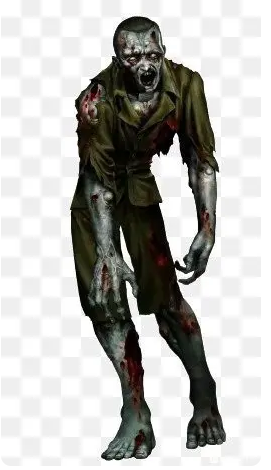
2.Zombie dog (zombie dog)
Zombie dogs are an academic name for domesticated dogs that are infected with the T-virus through a second method, namely by ingesting infected food or organisms. It should be noted that they are separate from Cerberus, which are specifically made as BOWs (Cerberus are stronger, tougher and smarter, some can even be controlled by dog whistles), while Zombie Dogs are considered T-Viruses spread and are therefore classified as irregular mutants.
Like their selves, zombie dogs retain their former agility, with significant improvements in durability and aggression. In most cases, hiding prey should listen for the sound of rubbing claws as a clue of their presence, as well as their growling threats, indicating that it is aware of the player and is preparing to attack. They make a cry of pain when they die.
Similar to canine-related T-virus mutations, their left eye sockets are generally rotten, causing their left eye to bulge significantly from its otherwise brutal but proportional appearance, giving it a more terrifying appearance.
Like most victims of the T-Virus, zombie dogs also suffer from tissue necrosis. It should be noted that unlike their BOW zombie counterparts, their necrosis is much more severe, resulting in exposed muscles, tendons, and even bones as well as a significantly rotten face (which, like zombies, is actually a genetic and muscle mass) been strengthened).
The zombie dogs encountered in these two outbreaks usually roam in groups of two or three, and occasionally four, and adopt random attack patterns. They often surround their prey before swooping down, pinning them to the ground and slitting their throats.
Some were accidentally discovered by a few survivors in Raccoon City. Some attend Raccoon University. One of them breaks into Raccoon General Hospital in search of prey.
The Raccoon City sabotage incident is the only known incident in which a non-Doberman Pinscher infected a Labrador retriever. The frequency with which Doberman pinschers are found to be infected is because Chief Brian Irons suggested to the K9 unit that the breed be used as police dogs for the Raccoon Police Department.
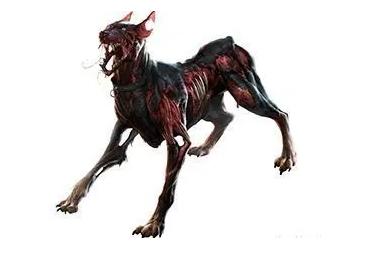
3. Spider (Drain Deimos)
You can call spiders (Drain Deimos) fear-eaters, brain-eaters, and marrow-eaters, but in fact the Chinese literal translation of this thing is: Water Pipe Deimos, hereafter referred to as DD.
Often abbreviated as “DD”, it is a parasite infected and mutated by T virus. Their only confirmed sighting was during the Raccoon City Leak, where they were infected by zombie blood. Like many other arthropods, fleas respond to viruses by a significant increase in size, intensity, and aggressiveness. Like the T-Virus creations, Drain Deimos takes its name from mythology - in this case, Deimos is the personification of Greek fear.
They share many similarities with Chimeras in terms of physiology and strength, but are much larger in size compared to Chimeras, making evasive maneuvers more difficult. Fortunately, though, they lack the "predecessor's" tendency to target the jugular vein of their intended victim.
DD originates from bloodthirsty (blood-sucking) insects that mutated from feeding on humans infected with the T-Virus, but have evolved to rely on human cerebrospinal fluid, which they extract through their needle-like body parts. In their expanded state, they can potentially kill humans.
The creature's appearance is particularly bizarre because the rapid growth caused by the T-Virus exposes its muscles, forcing the creature to molt repeatedly.
Drain Deimos are an asexual, all-female species and therefore reproduce through parthenogenesis, a form of reproduction found in some insects that induces embryonic development in unfertilized eggs. When DD consumes a certain amount of nutrients, they begin to lay eggs.
They like moist and dark places.
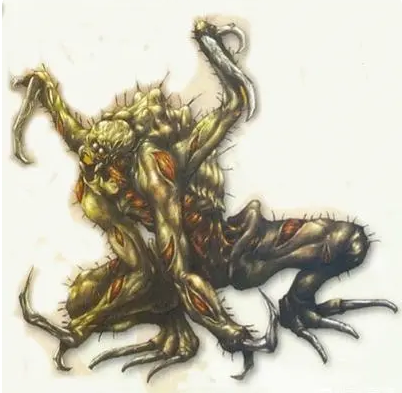
4.Brian sucker
Brain eaters are the result of secondary infection of arthropods by T-virus. It is a close relative of DD. Compared to DD, Brain Eater's damage is stronger.
These creatures were born from arthropods, which were infected for a time during the destruction of Raccoon City. They live in the P-12A incineration treatment plant and were infected by the T-Virus before the G-Virus capture mission, causing widespread infection in the city.
Although they are similar in appearance to DD, their mutations are quite unconventional (unpredictable mutations), and their heads even mutated into two, and their bodies look more like reptiles. However, the differences are obvious, and it is difficult to simply think of them as subspecies. . This is probably due to the differentiation of the original parasitic animals. In other words, the differences in host DNA obtained during T-virus infection will change the infected cells, prompting different types of mutations in different types of organisms. Compared with the DD that sucks the spinal cord, this one has the habit of directly coveting human brains. They like to twist off the head of their prey. The two pointed tongues evolved into a shape suitable for prying open the skull.
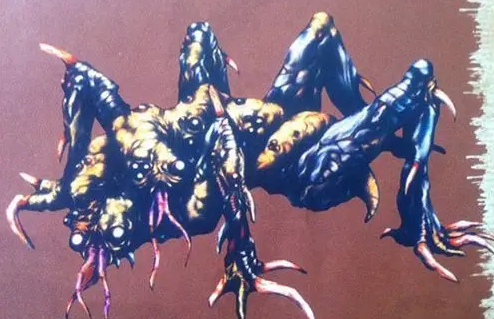
5.Hunter β(hunter β)
(Hunter β) (development code: MA-121) is a prototype improved version of the bio-organic weapon hunter, designed as a derivative of the early alpha hunter. Unlike its predecessor, this prototype was developed by Umbrella Europe.
Hunterβ is an umbrella European company for improvements to the earlier Hunter Developed for α work. Since Umbrella is able to clone B.O.W.s at low cost, they can proceed with further genetic modification of the Predator Alpha, focusing on improving the Predator's performance capabilities. As the Predator Beta's attack power is reduced, its nervous system is also improved, reducing reaction time when hit.
In September 1998, Umbrella European Distribution was preparing for final testing of Predator Beta before they could decide whether to mass-produce it. Taking advantage of the situation in Raccoon City later this month, 20 hunters were transported to the United States and trucked to Raccoon City, where the Umbrella Hunter Beta Biohazard Countermeasures Service and their monitoring staff will test and document the creatures. performance.
While in Raccoon City, the Predators used Raccoon General Hospital as a hunting ground; Carlos Oliveira saw a Predator Beta hunting and decapitating zombies.
One of the most notable features of the Hunter Beta is their disproportionate left forearm, a result of a flaw in trying to increase alpha attack power. Defects in the genetic modification can also be seen in tumors that cover the organism's body. While this potentially blurs their vision, beta predators have improved nervous systems and agility, making them better able to avoid injury in combat. Despite this, their attacks are weaker than their ancestors.
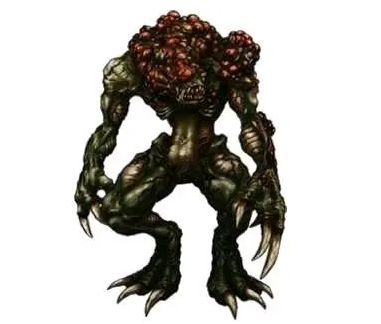
6.Hunter γ (hunter γ)
(Predator Gamma) (Development code: "MA-124") The Predator Gamma model was developed by Umbrella Europe as part of a redevelopment of the amphibian-based B.O.W.s that were introduced a decade ago. Dr. Marcus failed in "The Insidious".
Hunterγ was developed based on information obtained from the U.S. Division’s Hunterα model. Contrary to U.S. design methods, Hunterγ combines human DNA with a fertilized amphibian egg and combines it with the T-virus
In 1998, some Gamma models were shipped to Raccoon City. At least two of them were captured and sedated by Raccoon General Hospital staff. Corporal Carlos Oliveira of the Umbrella Biohazard Countermeasures Service (UBCS) Oliveira accidentally released them while trying to synthesize a T-Virus reagent for Jill Valentine. By October 1, a group had established a hunting ground in the Raccoon Park pond.
"Meanwhile, a clawless version of "Gamma" is also being stored at a water treatment facility beneath Raccoon University. Also on October 1, these hunters rushed out of their storage compartments and responded well to the moist underground environment and pools of water in the plants.
Due to the conditions necessary for survival, Umbrella considered it unsuitable for the B.O.W., but Umbrella continued to produce "γ" models until 2002, some of which were sold to Javier Hidalgo. (Javier is a South American drug lord, because the water environment there is very suitable for hunters γ)
Being an amphibian hunter series, the “γ” model has no eyes or teeth. Instead, it has a large mouth that can swallow its prey's entire body and limbs in its webbed hands.
Unlike previous frog-based experiments "lurkers", they retain the intelligence increased by previous hunter-killer research. However, due to their amphibious nature, they are extremely difficult to transport and maintain. Furthermore, another factor that increases their weakness is that they cannot survive in dry air or high temperatures for long periods of time and therefore must be kept in a strict water environment. Only in this way can their survival be ensured, so they are not meant to be large in the first place. scale production. Since their production, following the events of Raccoon City, the "γ" series seemed to function better in tropical environments, as evidenced by their use on the Javier Hidalgo estate and estate.
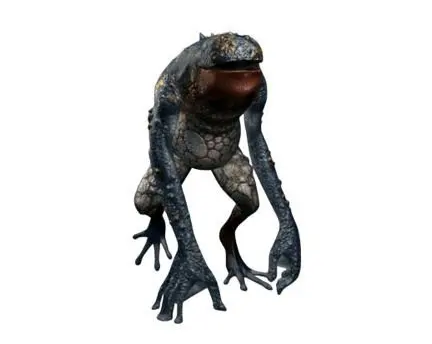
The story of "Resident Evil 3" takes place before "Resident Evil 2". The first half mainly tells the story of the heroine Jill who was attacked by the biochemical weapon "Stalker" while investigating the underground business of Umbrella Company in Raccoon City and was infected with T virus, so Her companion Carlos went to the affiliated hospital of Umbrella Company to find an antidote; in the second half of the story, Jill has recovered her health, and she needs to escape from Raccoon City, which is about to be bombed by missiles, within a limited time, and Start the final desperate showdown with the "tracker".
The above is the complete content shared with you about the common monsters in Resident Evil 3: Remake. Friends who are interested, please come and watch!